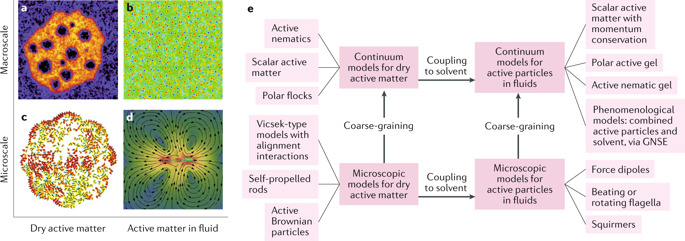Nature Reviews Physics ( IF 38.5 ) Pub Date : 2020-03-10 , DOI: 10.1038/s42254-020-0152-1 M. Reza Shaebani , Adam Wysocki , Roland G. Winkler , Gerhard Gompper , Heiko Rieger

|
Active matter, which ranges from molecular motors to groups of animals, exists at different length scales and timescales, and various computational models have been proposed to describe and predict its behaviour. The diversity of the methods and the challenges in modelling active matter primarily originate from the out-of-equilibrium character, lack of detailed balance and of time-reversal symmetry, multiscale nature, nonlinearity and multibody interactions. Models exist for both dry active matter and active matter in fluids, and can be agent-based or continuum-level descriptions. They can be generic, emphasizing universal features, or detailed, capturing specific features. We compare various modelling approaches and numerical techniques to illuminate the innovations and challenges in understanding active matter.
中文翻译:

活性物质的计算模型
从分子马达到动物群的活性物质以不同的长度尺度和时间尺度存在,并且已经提出了各种计算模型来描述和预测其行为。方法的多样性和对活性物质建模的挑战主要来自不平衡特性,缺乏详细的平衡和时间反转对称性,多尺度性质,非线性和多体相互作用。存在干活物质和流体中活物质的模型,并且可以是基于代理或连续水平的描述。它们可以是通用的(强调通用功能),也可以是详细的(捕获特定功能)。我们比较了各种建模方法和数值技术,以阐明了解活动物质的创新和挑战。



























 京公网安备 11010802027423号
京公网安备 11010802027423号